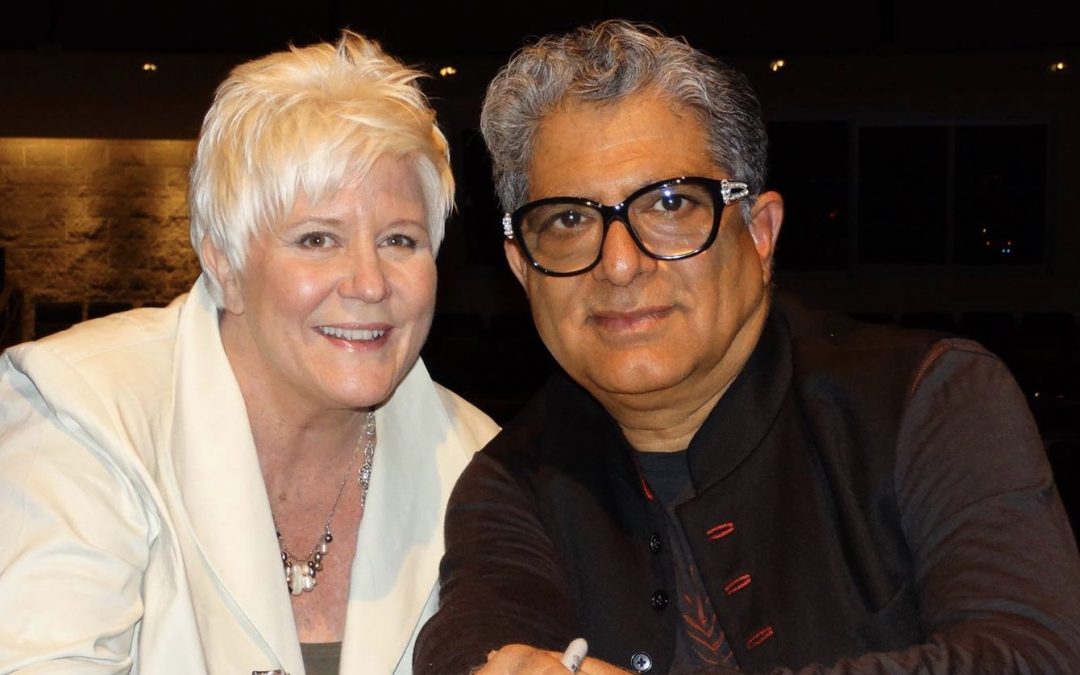We’ve all heard the phrase, “it’s not what you know, it’s who you know.” Now, aside from the fact that what you know is definitely important, there is some truth to the idea that relationships influence your options, in business and in life.
Healthy relationships increase our options, our leadership lid and our capacity for success. Unhealthy relationships are a cage, limiting our ability to grow, to inspire and to live in our own gifts and vision for life.
How we relate in interpersonal situations, both in groups and one-on-one, is a strong indicator of our relational leadership capacity. So, what’s a good way for us to rate ourselves and see where we may have some room for improvement? The process of answering these five questions will help accurately ascertain and improve our relational leadership.
1 – How do I operate inside someone else’s vision?
How we view ourselves when we’re working inside someone else’s system will play a big role in how we communicate and operate within it. Do we feel free or stuck? Valued or used? Do we fully understand the vision and our role in it? Is that role vital and life-giving or do we struggle to find our motivation each day? Perhaps most importantly, are these impressions being created by the situation, or are we bringing them into the situation because of our expectations?
2 – Where do I fit when the leader has a lower leadership lid?
What do we do and how do we think as a member of a team in which the leader does not possess the leadership capacity and ability we do? This is frustrating, and if we’re not intentional in our thoughts and our actions, it creates problems for the whole team … problems the leader may not be sufficiently able to address.
3 – Who am I when I meet someone for the first time?
First impressions matter, so the temptation to be inauthentic is very real. However, healthy relationships require authenticity, and there’s no better place to begin than at the very start. While putting our best foot forward is expected, we must be careful to do this with authenticity. Sacrificing realness for short-term acceptance often creates relational stress down the road.
4 – Who am I in an unfamiliar place or position?
“New” often feels uncomfortable, and that often tempts us to put up a guard or façade. However, we may still be an authentic, open version of ourselves in an unfamiliar situation. Fear or apprehension may still be there, yet when our confidence and enthusiasm comes from within, it’s not easily influenced by circumstances. This is the sort of magnetic leadership that draws people to us and makes them more confident and enthusiastic because of our example.
5 – Who am I when I don’t connect?
Whether the challenge is understanding a situation, a task or what a person is trying to communicate, sometimes we just don’t get it. What then? Do we lean in and seek understanding, or do we dismiss that person or situation as “too hard” or “just not my thing”? While we may not be responsible for the disconnect in understanding, we may still be the one to choose to create a way to bridge that gap. That kind of leadership is valuable no matter who you are or where you are in an organization. Bridge builders, translators and enthusiastic “let’s-do-it” people are vital to the success of every team
So, how did you do? Did you discover some areas of your relational leadership that would benefit from more focus and development? We’re going to unpack these ideas in future blogs. In the meantime, share your story in the comments below or contact me here to talk about it.

Value and Opportunity Have No Age Restrictions
How often have we heard “they’re too young” or “you can’t teach an old dog new tricks” or something along those lines? If you believe the clichés, there’s some magic span of time in our lives where growth is permitted. Some call it the “peak years” or the “productive...

No enterprise will thrive without this
Recently, I had the privilege of attending an International Maxwell Certification (IMC) conference, including a full-day think tank with John Maxwell before the conference. While I’ve been through the certification process before, I have committed to attending these...

Why Questions Are Better Than Answers
Leaders do not need to be told what to do. If they can see their situation clearly and understand their options fully, most of the time they will make the best call. Helping someone see clearly and understand fully is a process, and it may not always be easy, but it’s...

How one small shift can cause a breakthrough: A Case Study
Communication problems are one of the greatest causes of poor morale, lack of productivity and failure with any team. When a leader models intentional listening, that shift will inspire their team to follow that lead, increasing that team’s capacity for success with...

How Autocratic Leaders Kill Communication: A Case Study
Good leaders understand the necessity of healthy lines of communication with their team. Sometimes, though, we get in our own way, stifling what might otherwise be a dynamic environment. Why does this happen, and how would a shift in thinking lead to better...

My Friend Deepak: A story about lost opportunities and second chances
All of us have disappointed ourselves, fallen short of a goal or made a promise we didn’t keep. While we all need to do our best to walk in integrity, sometimes we are too slow to let go of our failures. Too slow to set them down and carry only the lessons learned...

From autocrat to influencer: making the shift
As a leader, is it more important to get things done, or to develop a group of people who get things done? Our initial answer to this question says a lot about which method of leadership we tend to prefer: autocratic or influential. In a previous article, we looked at...
Want to be significant? Here’s a good place to start.
Gather any group of successful leaders together and ask them to define significance. You may well get as many answers as there are people in the room. What you will find, though, is that every one of them believes in the value of pursuing significance. As leaders,...
Value and Opportunity Have No Age Restrictions
How often have we heard “they’re too young” or “you can’t teach an old dog new tricks” or something along those lines? If you believe the clichés, there’s some magic span of time in our lives where growth is permitted. Some call it the “peak years” or the “productive...
No enterprise will thrive without this
Recently, I had the privilege of attending an International Maxwell Certification (IMC) conference, including a full-day think tank with John Maxwell before the conference. While I’ve been through the certification process before, I have committed to attending these...
Why Questions Are Better Than Answers
Leaders do not need to be told what to do. If they can see their situation clearly and understand their options fully, most of the time they will make the best call. Helping someone see clearly and understand fully is a process, and it may not always be easy, but it’s...
How one small shift can cause a breakthrough: A Case Study
Communication problems are one of the greatest causes of poor morale, lack of productivity and failure with any team. When a leader models intentional listening, that shift will inspire their team to follow that lead, increasing that team’s capacity for success with...
How Autocratic Leaders Kill Communication: A Case Study
Good leaders understand the necessity of healthy lines of communication with their team. Sometimes, though, we get in our own way, stifling what might otherwise be a dynamic environment. Why does this happen, and how would a shift in thinking lead to better...








0 Comments